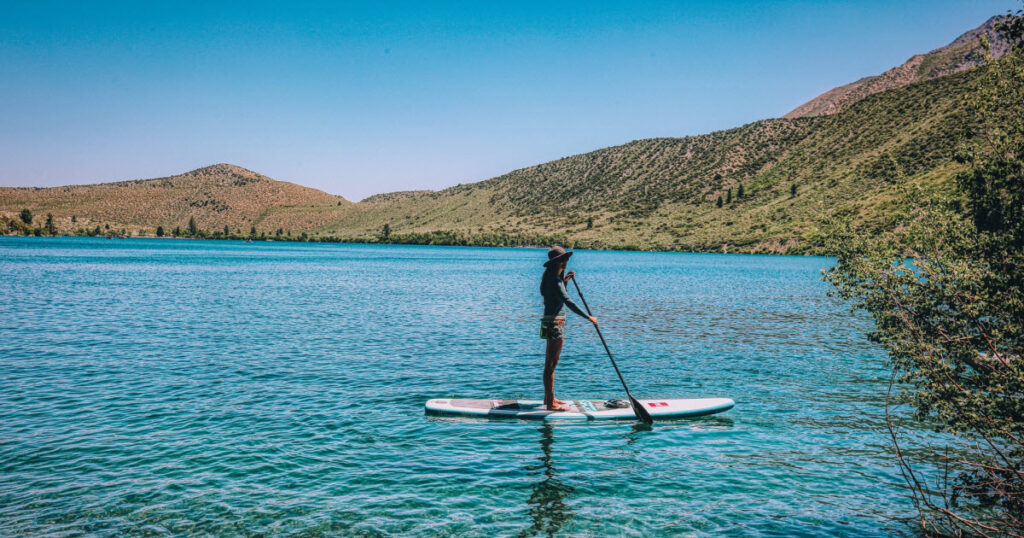Knowing the correct way to hold the paddle is the first step to becoming a paddle boarding master. Once you get that basic element down, you’re ready to get the most out of your time on the water. Even if you’ve tried paddle boarding before, it doesn’t hurt to brush up on the correct form so you get an optimal workout. So today I’ll tell you how to hold a paddle board paddle properly for efficient, powerful strokes and a more enjoyable experience on the water.
Let’s dive right in!
Anatomy of a Paddle Board
Before we start talking about technique, let’s get to grips with the different parts of the paddle and what they’re called.
Not all paddles are the same. You’ll find a range of different shapes and sizes. But they do follow a basic form, and a lot of elements remain consistent regardless of brand or design.
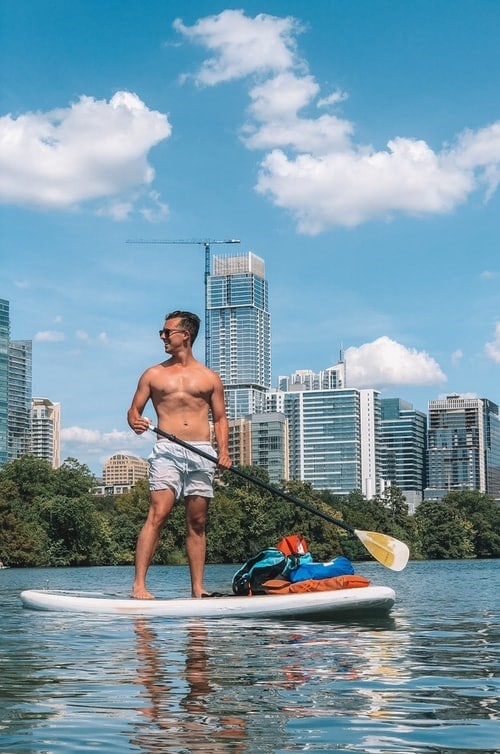
Any SUP (stand-up paddle board) paddle will have the following identifiable parts.
- T-Bar Grip – This is at the top of the paddle and functions as a handle. It should be T-shaped and comfortable to hold.
- Shaft – This is the main body of the paddle and where your other hand will be placed.
- Blade – This is the flat, broad part of the paddle which enters the water.
- Tip – This is the very end of the blade.
Extra Features that Some SUP Paddles Have
Additionally, some paddles come with extra features that you can adjust for a perfect fit.
These include a scale, which lets you adjust the paddle length to match your arm length. The scale is marked by numbers, so you can just remember your unique number and resize the paddle to that each time.
On the shaft of foldable and collapsible paddles, you might find a clasp mechanism. This allows for quick and easy assembly, and you’ll hear a satisfying snap when the blade is safely secured to the paddle.
How To Hold A Paddle Board Paddle Correctly
Now you know the different parts of the paddle, you’re all set to learn how to hold and use it properly.
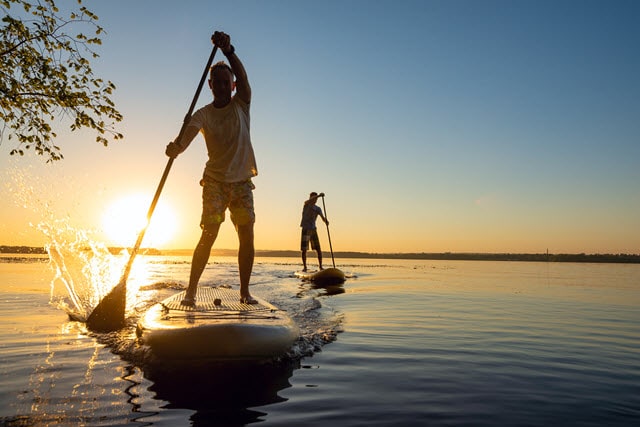
Below is a step-by-step guide on how to hold a paddle board paddle correctly. Let’s go!
1. Angle the Paddle Away From You
At first, it may seem more natural to angle the paddle towards you and mimic a scooping motion. However, this actually does the opposite of what you want, really slowing you down.
You need to work against the water in order to propel yourself forwards.
Make sure you angle the blade away from you so it pushes down on the water. This creates lift and lets you glide along evenly.
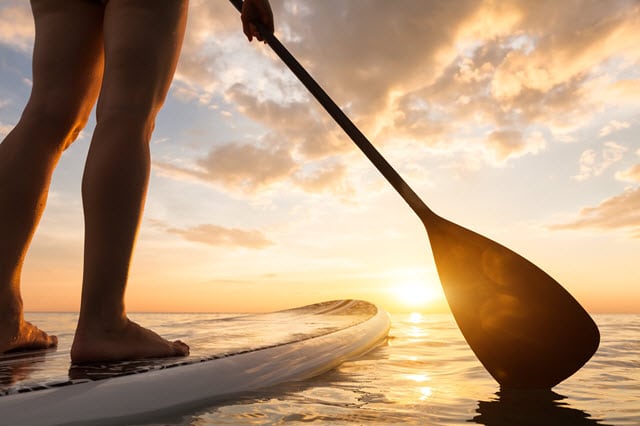
2. Put Your Arms in the Right Position
Proper arm positioning tends to come naturally to beginners, but it’s definitely still worth explaining.
If you want to paddle on the right, place your left hand on the T-bar grip and your right hand on the shaft. Likewise, if you are paddling on the left, you’ll need to place your right hand on the T-bar grip, and the left hand on the shaft.
Over time, quickly switching hand positions between your sides will become almost effortless.
To find the perfect distance between your hands:
- Hold the paddle above your head and form a ‘Y’ shape with your arms.
- Lower the paddle down to the side, letting your hands move comfortably along the paddle.
- Once your arms are lowered, your hands should be in the perfect position for paddling.
3. Engage Your Core
The power of the paddling motion should come from your core, not from your arms. Try to twist your torso with every paddle thrust, while keeping your gaze directed straight ahead and your hips firm and still.
For maximum efficiency, bend your knees slightly and try to engage the back muscles while you paddle. This motion takes some practice, but getting the hang of it is essential to correct paddle boarding.
4. Immerse the Paddle with Each Stroke
For maximum power in each stroke:

- Push the paddle into the water until it’s fully immersed, then
- Pull it through the water as far as your ankles, and
- Then pull it back up again and out of the water.
As a way to keep proper form, it helps to visualize your body being pulled in front of the paddle with each stroke.
5. Use Good Posture
Practicing good posture on the board is extremely important for getting the most out of paddle boarding.
- Make sure you stand straight but maintain some suppleness in your limbs.
- Keep your back straight, and your shoulders squared but never hunched.
- Always keep your knees slightly bent for optimal balance.
Why Holding the SUP Paddle Correctly is Important
So, let’s review why holding the paddle correctly is so important in paddle boarding.
Efficient Energy Use
You use your muscles fully and get a better workout when you’re holding the paddle the right way.
Better Control
With the correct hold and the perfect posture, you’re working in sync with the paddle’s ergonomic design.
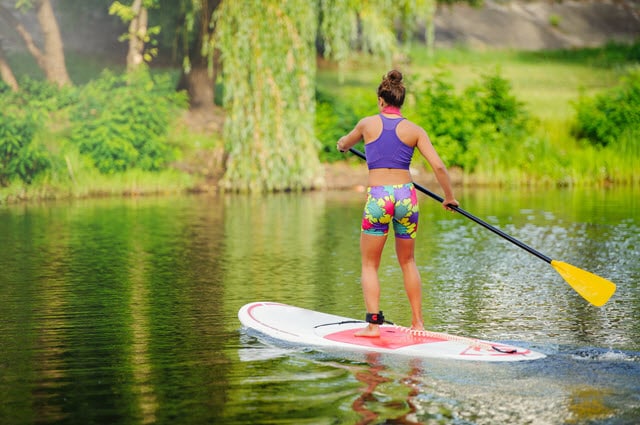
That means you cast powerful strokes and enjoy more control over your pace and direction.
More Use of Your Core
Using your core, as opposed to just relying on the arms, means you get an excellent full-body workout.
Overall, holding the paddle the right way means you can master proper technique and move more efficiently on the water. And that means more fun and better exercise.
Learn more in my article about the benefits of paddle boarding.

